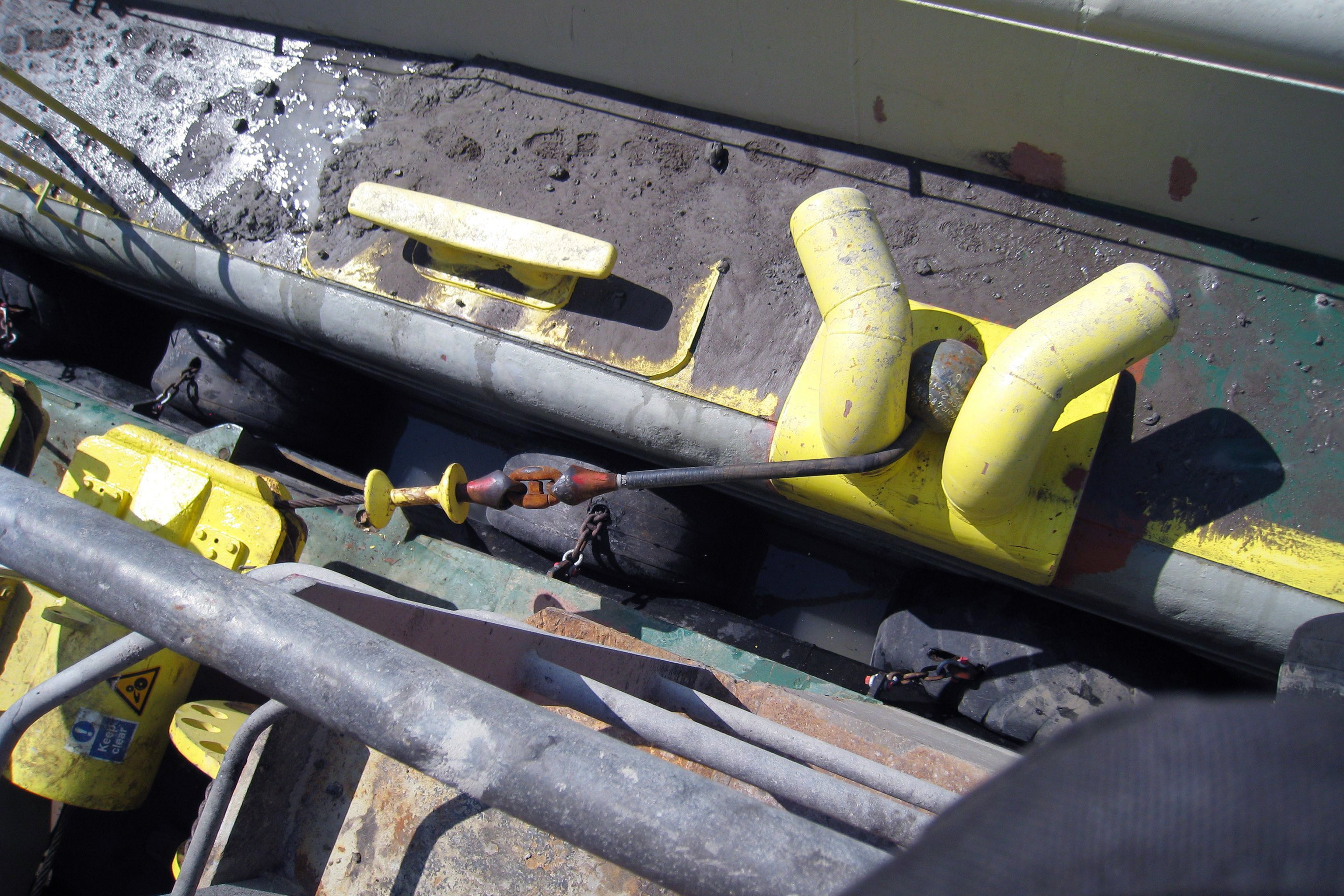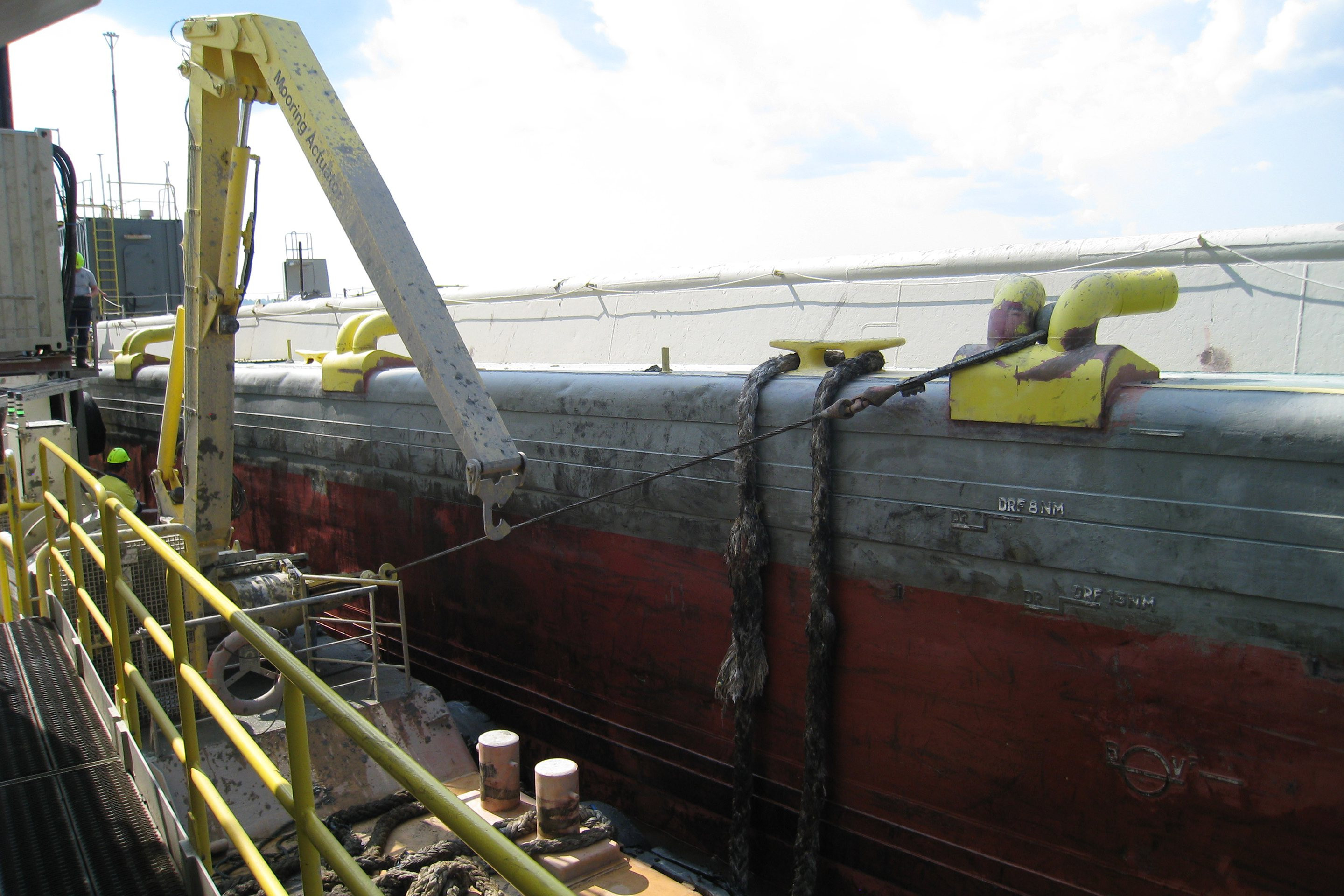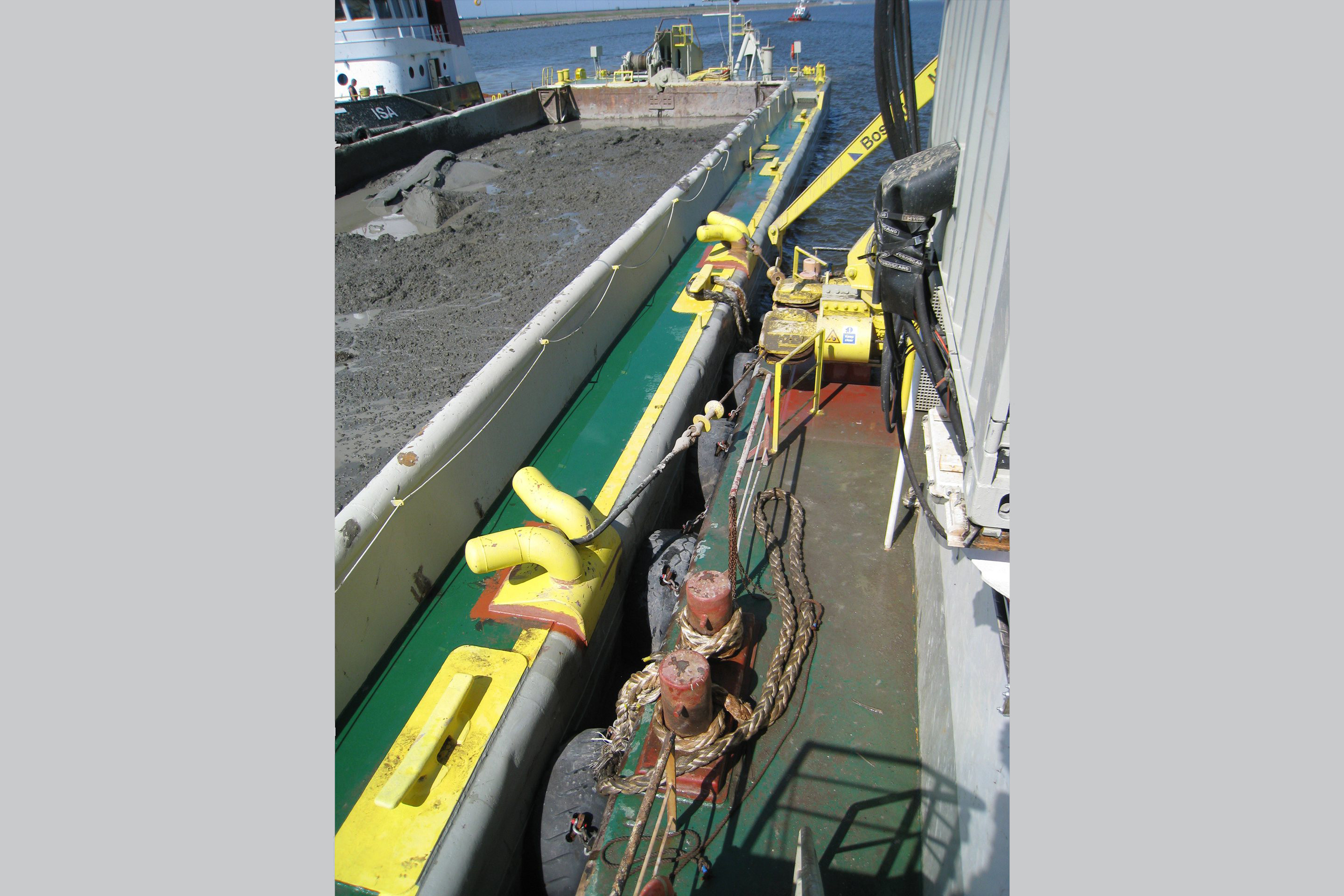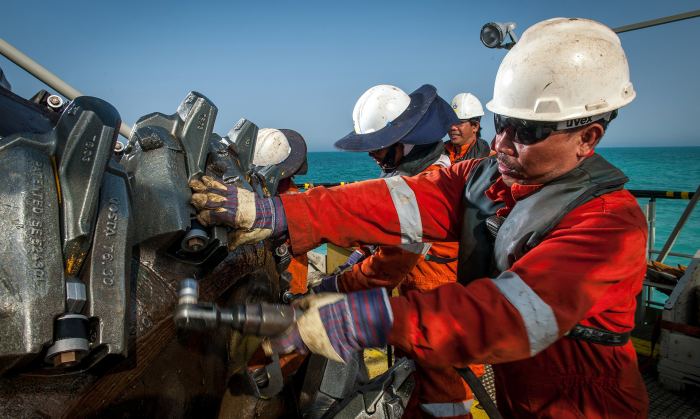Innovative ideas at the heart of Boskalis
Boskalis believes that innovation is an important catalyst for growth. Staff are challenged and encouraged to devise creative solutions, for example in the Boskalis Innovation Challenge, a company-wide contest in which people are invited to submit innovate ideas. A recent innovation is the Mooring Actuator. Backhoe engineer and inventor Bas Veenstra and Fleet Manager Frans Oosterwijk explain.



What does the Mooring Actuator do, and what problem does it solve?
Frans: “The Mooring Actuator makes manual mooring with lines obsolete. The Mooring Actuator maneuvers a barge alongside a backhoe without a hitch and provides stability during the loading operation. A backhoe is based on the common land-based backhoe excavator, which is mounted at one end of a spud-rigged pontoon. During operations with a backhoe, we generally use barges to transport the dredged material. The empty barges, which can rise up to five meters above the backhoe, have always been attached to the bollards on the backhoe using heavy lines. There are quite a few drawbacks to this approach. Often, two crew members are required on both the barge and the backhoe to drag the heavy lines around and moor the two units alongside each other. There is a considerable risk of falls, back injuries, and injuries to hands or fingers. During the loading operation, the barge gets lower and lower respective to the backhoe and so the lines have to be paid out. As that’s being done, the loading operation has to be suspended, with a lot of lost time as a result. And dangerous situations can arise if a line breaks. All these factors explain why Boskalis has been looking for a more efficient mooring system for some time now. The idea that Bas came up with really is the answer we were all looking for: it makes things safer, more economical, and faster. The system proved its worth on the pilot project in St Petersburg, Russia, where we tested it thoroughly for more than six months.”
How did you come up with the idea? Have you had practical experience with mooring vessels?
Bas: “You could certainly say that! I studied ship engineering before I joined Boskalis. As a member of the crew, I picked up a lot of experience with mooring and I have done my time lugging heavy lines around. Later on, I became an engineer with Fleet Management, specializing in backhoes. Because of all that practical experience, I’ve never stopped working on ways of mooring barges more safely. An important breakthrough was the idea of using Constant Tension (CT) winches to slacken off lines when tension gets too high and then take them up again immediately. Once I came up with the idea of using a swivel arm to transfer the line, I started thinking about a way of attaching the line to the barge from the backhoe without manual assistance. In the end, the idea of a large ball seemed to work. It’s an old-fashioned principle in a new application.”
The idea that Bas came up with really is the answer we were all looking for: it makes things safer, more economical, and faster
Was Boskalis enthusiastic about your idea straightaway?
Bas: “Well, I found out that I couldn’t get my idea across clearly. After I saw a documentary about Steve Jobs, I realized that you sometimes have to fight for your ideas and that I had to make the benefits of my idea clearer. So I made a wooden model. And my confidence increased as the model took shape. I took the model to the head of Fleet Management. He was very enthusiastic and he arranged for a presentation to the Board of Management. Things went fast after that: not long after, the idea had been patented and I was given a budget to build a real-life prototype.”
We must continue to innovate: stagnation means decline
What is the future of the Mooring Actuator?
Frans: “The crew of the backhoe thinks the Mooring Actuator is a great leap forward. For them, the main advantage is that it makes the work safer: the risk of falls or injury is considerably reduced, there is no more lugging around of heavy lines, and no more time is lost adjusting the lines. The barges are more stable thanks to the CT winches and mooring a barge is at least ten minutes faster than it used to be. The real-life tests have been a fantastic success and so we are now looking at ways of using the system more widely. Incidentally, the system can also be used on shore for unloading barges, so there are plenty of opportunities and openings. This innovation is a good example of the ideas that Boskalis needs to remain a leader in the world of dredging and offshore services. We must continue to innovate: stagnation means decline.”
